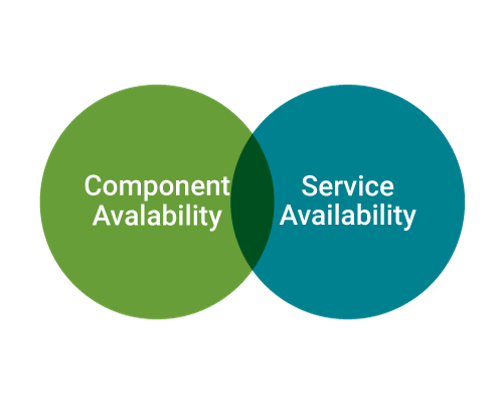
Availability Management in ITIL is the ability of a configuration item or IT Service to perform its agreed function when required. Availability is determined by reliability, maintainability, serviceability, performance, and security. It is the duty of availability management to make sure that the level of availability that is delivered in all the IT services fulfills the availability needs in a manner that is both timely and cost-effective. Its main concern is to meet the present and future availability needs of the business.
The Objective of Availability Management
The objectives of availability management are to:
- Create and maintain the availability plan, which echoes the present and future requirements of the business.
- Guide the business and IT departments regarding availability-related issues.
- Make sure that the achievements of availability meet the designated targets or exceed them. If they do not meet the targets, it has to help with the diagnosis and resolution of the incidents and problems related to it.
- Analyze all the changes made to check their impact on the availability plan and proactively improve the ability wherever the costs can be justified.
Scope of Availability Management
Different areas such as design, implementation, measurement, management, improvement of IT service, and component availability are covered by ability management. It starts as soon as the availability requirements become clear. This is an ongoing process that ends only when the IT service is decommissioned or retired.
Value of Availability Management
Service availability is the main factor in customer satisfaction and the success of the business. If a customer is dissatisfied with the availability of IT services, it can result in loss of business to competitors. The following benefits are provided by availability management:
- It ensures that the availability of services matches the present and future needs of the business.
- It makes sure that the impact of unavailability of any IT service is minimized.
- A single point of accountability for availability is created in the organization.
- Cost justification is provided for the levels of service availability provided.
- The IT availability requirements, which are determined by the business, can be used to design the IT services.
- The shortfalls in providing the required levels of availability can be recognized easily, and the necessary actions can be taken to correct them.
- The frequency of IT service failures and their duration is reduced.
Principles and Basic Concepts of Availability Management
There are two interconnected levels that complete availability management.

-
Component Availability
It involved all the aspects of component availability. -
Service Availability
It involves all the aspects of service availability and the actual or potential service impact that component availability can create.
The following important concepts are the main focus of availability management as they influence the overall availability and the perception of unavailability in the business.
1. Availability
The ability of a service, component, or configuration item to perform its agreed function when required is called availability.
2. Reliability
A measure of how long a service, component, or configuration item can perform its agreed-upon function without any interruptions is called reliability.
3. Maintainability
A measure of how quickly and effectively a service, component, or configuration item can be restored to normal service after experiencing a failure is called maintainability.
4. Serviceability
The ability of a third-party supplier to meet the agreed-upon terms of the contract, which includes agreed levels of availability, reliability, and maintainability, are called serviceability.
Process Activities of Availability Management
The key activities performed by availability management are:
- To determine the availability requirements from the business
- Monitor, measure, analyze, report, and review the availability of services and components.
- To perform an unavailability analysis that investigates all the events, incidents, and problems that involve unavailability. Necessary corrective actions are taken after this.
- Perform a service failure analysis where the underlying causes for service interruption are identified.
- To identify the vital business functions and design for availability and recovery.
- Perform component failure impact analysis (CFIA), single point of failure analysis (SPOF), and fault tree analysis (FTA).
- To create models to determine whether the new models will meet the stated requirements.
Challenges of Availability Management
The following challenges are faced by availability management:
- First, there are high expectations from the businesses to be met regarding the availability of services. This includes any assumptions based on 100% availability as an entry point and rapid recovery after a failure has occurred.
- Successfully gathering and combining the large amounts of data available into a useful and integrated Availability Management Information System (AMIS).
- IT organizations often cannot delegate the appropriate authority and empowerment needed to influence all the areas of the IT support organization.
Risks of Availability Management
Availability management encounters the following risks:
- Lack of specific availability management tools which are required to support the process.
- Lack of commitment from the business to the process of availability management.
- Reporting processes that are too labor-intensive.
- Excess focuses on the technology and not on the needs and services of the business.
- Lack of specific resources with the necessary skills to establish availability management.
Conclusion
Availability Management hence creates and maintains the availability plan while providing guidance to the business and IT department. It makes sure that the achievements of availability meet the designated targets or exceed them. Give yourself a chance to learn the best skills and practices in service management with ITIL 4 Foundation training, and elevate your professional expertise to a new level.
Learn more about Service Management best practices through Invensis Learning’s IT Service Management certification training on ITIL V4 Foundation Course, SIAM Foundation, SIAM professional, VeriSM, etc.















